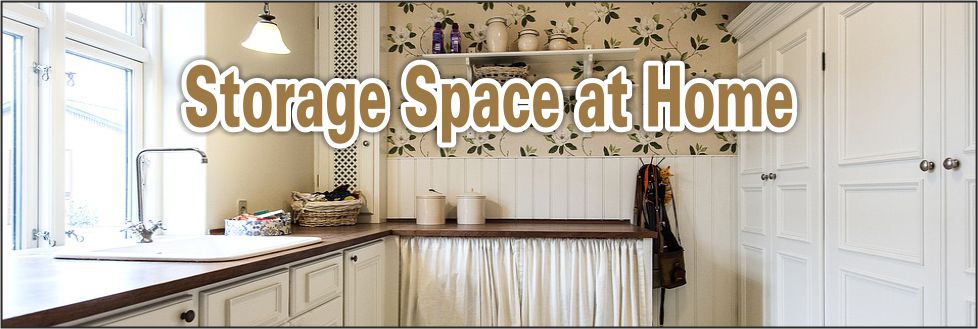Storage Space
Organizing The Cabinets
When it comes to using storage space at home, taking care of cabinets and their contents is important. Avoid overloading shelves or placing heavy items on top of cabinets. Group the contents so that they are easily accessible, and sort out the cabinet space from time to time to clear away any accumulated rubbish.
Choosing Cabinets
Cabinets can either be built-in or free-standing units. Each type has its own advantages.
- Built-in cabinets: These cabinets are designed to fit a specific storage space and allow you to adapt the interiors for items such as audio or visual equipment.
- Freestanding cupboards: These cupboards are easy to reposition, which makes them ideal for changing the layout of a room, and they can be taken with you when you move.
Considering Scale
- Planning a small kitchen: Use wall cabinets instead of floor cabinets to make the most of kitchen storage space. Wall cabinets are less deep and take up less space. Make sure that items and appliances will fit on the narrow counters and inside the cabinets.
- Suiting your height: To ensure that a wall cabinet is positioned at the correct height for you, stand in front of it and try to rest a hand flat on the upper shelf. If you cannot reach it, lower the cabinet.
Organizing a Linen Cabinet:
Sort linens into categories such as sheets and pillowcases. Label each shelf of the linen cabinet to show its contents, allowing you to easily put the right type of linen in the right place every time.
This plan is for using storage space in a bedroom for different types of cabinets. Regardless of the room, use the following tips to make the most of your storage space.
Ensuring Free Access:
Leave enough space in front of cabinets to allow the doors to open fully.
- Using Awkward Spaces: Place cupboards with sliding doors in areas with limited clearance.
- Filling Recessed Areas: Use a small cupboard in a recessed area, such as a window bay.
Organizing Closet Space
You can fit a lot in a closet if you make use of both horizontal and vertical space. Before hanging or stacking items, group them by length or width and separate those to be folded or kept in boxes. Keep garments in the same place every time to maintain a neat space.
Filling a Fireplace: Place a small, decorative cupboard in an old fireplace. Make sure the chimney has been sealed. If not, clean the fireplace regularly to remove soot deposits.
Protecting Items
To protect expensive or fragile garments in your closet, you can make or buy cotton covers. Alternatively, you can save the plastic bags from a dry cleaner and use them to cover your garments. Avoid overloading hanging bars or shelves and leave enough room to remove and replace clothes and accessories easily. Utilize all the space available, including the insides of doors. However, when hanging items on a door, avoid overloading it since it could stress the hinges. Lightweight objects such as ties and costume jewelry can be hung on doors using one hook for each item.
Sharing Storage Space
When children share a bedroom, assign each child a color and paint storage units and hangers in their respective colors to indicate where their items are kept.
.
To make use of a niche, attach a rail across it to hang clothes. Leave enough room between the rail and the back wall to accommodate hangers. If there is no space on doors, you can hang a roller blind at the front of the niche instead.
To store shoes efficiently, keep little-used shoes in boxes on a closet floor or shelf. To easily locate the shoes, take a photograph of each pair and attach it to the relevant box.
Saving Space
- Compacting Clothes: Store non-creasing clothes like thin sweaters on closet shelves by rolling them instead of folding them.
- Utilizing Doors: Attach a towel bar to the inside of a closet door, slip shower curtain hooks onto the bar, and hang belts and ties from them.
- Attaching a Mirror: Instead of using a freestanding mirror, attach a mirror to a closet door. Choose a door that has its back to the light so that light falls on you and not on the mirror.
- Using a Spare Room: Fill a closet in a spare room with seldom-worn clothes. Empty the closet whenever it is needed for guests.
Tip: If you would like to read more about “Storage Space at Home,” click on the “tags” below.






